Dishwasher Buying Guide
A comprehensive guide to buying a dishwasher. Learn what to look for in a dishwasher so that you can make an informed decision.
Getting Started
Outfitting your kitchen with an energy-efficient dishwasher is one of the easiest ways to save time and money. Whether you're looking to upgrade an existing model, shopping for a new home, or you're just sick of doing dishes by hand, you've come to the right place.
Installing an ENERGY STAR certified dishwasher can save more than 230 hours and around $100 every year, compared to hand washing. Keep reading to figure out what you need to know to start saving.
Sizes of Dishwashers
Most dishwashers are one of two sizes: standard or compact. Standard size dishwashers are 24 inches wide whereas compact models are only 18 inches wide. The two sizes of dishwashers differ only in width. They share a 34" height and 24" depth.
Standard dishwashers include Tall Tub dishwashers that offer a larger interior capacity despite their shared outer dimensions. If you need something slightly smaller, look for an ADA Compliant/Short Tub dishwasher. These units are only 32" high.
The capacity of these machines will depend on the size of your dishes. But in general, the different styles each offer consistent capacity range:
- Countertop Dishwashers - up to 6 place settings
- Compact Dishwashers - 8 - 10 place settings
- Portable Dishwashers - 8 - 12 place settings
- Standard Dishwashers - 10 - 14 place settings
- Tall Tub Dishwashers - 14 - 16 place settings
- Single/Double Dish Drawers - 7 - 16 place settings
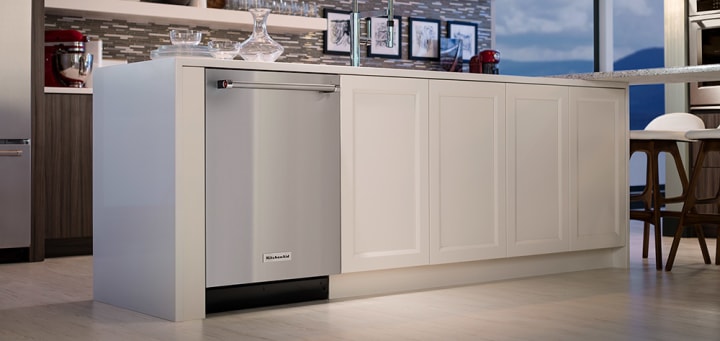
Types of Dishwashers
Built-In
The most common type of dishwasher is a built-in model. Built-in dishwashers are designed to be installed under your countertop. Their sides are unfinished as they will be hidden by the surrounding cabinetry. These models must be wired to a 120 volt circuit breaker by a licensed electrician.
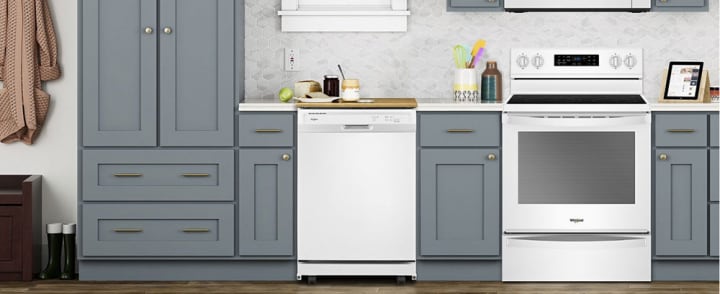
Portable
If you don't have room for a built-in model, consider a portable dishwasher. These free-standing models usually sit on casters and can be wheeled in and out of place as needed. They include two hoses. The first connects to your sink's faucet, providing water for the wash. Typically this requires a faucet with a threaded spout. If you have a faucet with a built-in sprayer, it's often possible to replace the sprayer with an appropriate adapter when you want to use the dishwasher. The portable dishwasher's second hose delivers wastewater back to the sink for draining. Both hoses and the dishwasher's electric cord store neatly behind the unit.
Portable dishwashers offer finished sides and often rest beneath a butcher block. These models can be converted into built-in dishwashers by removing the exterior walls and rollers. The versatile nature of a portable dishwasher makes them ideal for apartments, older homes, and mobile homes. They can provide extra counter space when preparing a meal and wheel out of the way when they aren't needed.
Countertop
Countertop dishwashers are typically around 22" wide x 17" high x 20" deep, weighing roughly 50 lbs. They need to be placed near a sink because, like portable dishwashers, they use hoses to pull water from a faucet and to empty waste water into a drain. So make sure you have counter space near your sink to spare before purchasing one of these models. If you want to free up that space when it's not in use, make sure you have a suitable storage location for it as well.
While countertop dishwashers can be convenient, they have a few drawbacks. As you might expect, they generally do not come with as many options as full sized models. Their size also prevents them from accommodating larger pots and pans, requiring you to wash these items by hand. Lastly, countertop dishwashers tend to be louder than most built-in models, ranging from 52 to 58 dB. Even with these shortcomings, countertop dishwashers can be a great option for renters, especially because you can bring them with you if you decide to move.
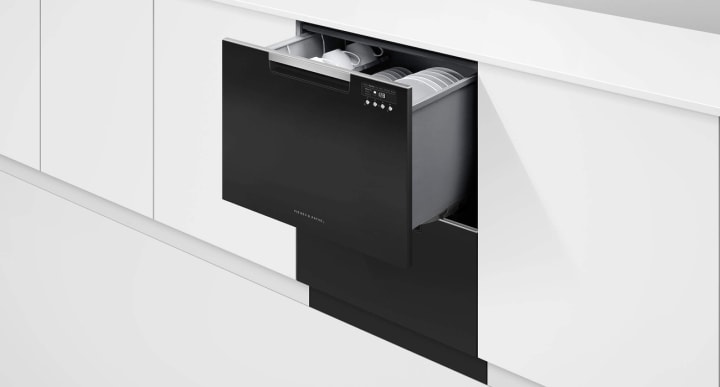
Dishdrawers
Dish-drawers started making their appearance in the US in 1997. Their innovative design splits the upper and lower racks of a standard dishwasher into two independent appliances. Instead of opening with a hinged door, dish drawers slide out for easy loading and unloading. This design is especially useful for those who have trouble bending down. And because each drawer can be run separately, dishdrawers enjoy exceptional energy efficiency.
Choose from double and single drawer designs. Double drawer dishwashers are conveniently sized to fit standard dishwasher cutouts. Single drawer models are the same width as a standard dishwasher but half the height. If a single drawer dishwasher sounds like a good fit for your home, you can repurpose some of the space used for your old dishwasher with more cabinet space.
Style
Exterior Appearance
Like most kitchen appliances, dishwasher manufacturers stick to familiar finishes: white, black, stainless steel, and black stainless steel. However, if you're looking for a more vibrant look, other colors are available. If you can't find the perfect finish, consider a panel-ready dishwasher. Custom panels are generally made to match the surrounding cabinets, but feel free to spice things up with something more unique.
Once you've decided on a finish for your new dishwasher, consider the placement of its control panel. Front controls make it easy to monitor the progress of a cycle. Top controls, on the other hand, provide an unblemished front panel that can give your kitchen a sophisticated look. Stylish as they may be, it can be difficult to know when top control dishwashers are running. In response to this concern, some shine a small light on the floor when in use.
Handles are the final feature to consider when thinking about the exterior appearance of your new dishwasher. Choose between bar handles and recessed ones. While bar handles can get in the way, snagging on clothing as you walk passed, they also provide a spot to hang dish towels. Recessed handles don't have any storage benefits. But they do provide the front panel with a sleeker appearance.
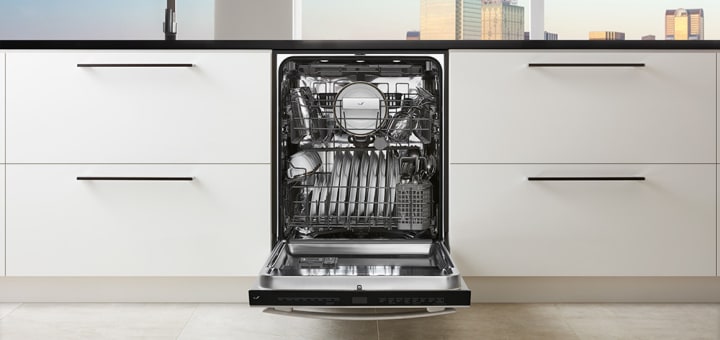
Interior Options
When looking inside a dishwasher, the tub material and rack features provide the greatest functional impact. Dishwasher tubs are made with either stainless steel or plastic. Stainless steel tubs are more resistant to stains and odors than plastic ones. They also retain heat more effectively, allowing dishes to dry more effectively. And while stainless steel is definitely more durable, plastic tubs are plenty durable themselves. Even plastic tubs tend to last longer than the dishwasher itself.
Dishwasher racks are far more diverse. Most models offer two racks: a top and a bottom. Some include a shallow third rack that's perfect for large utensils or silverware. If you wash large items often, consider a model with adjustable racks. Foldable tines are the most common adjustment, making room for wider items. Many dishwashers also feature upper racks that you can raise, lower, or even adjust their angle. Adjustable upper racks make it easy to find a spot for large dishes or cookware that might not fit in other models. If you're still looking for a little bit more guidance, then check out the following Best Dishwashers of 2021 list from our appliance experts.
Price Range
Dishwashers are often broken down into three price ranges:
Under $500
Just because they're affordable, doesn't mean they can't clean. These inexpensive dishwashers often come with plastic tubs and limited cycle options. Finding an adjustable rack in this price range is also rare. Plus, these models are often louder than more expensive models.
$600 - $900
Nearly every dishwasher in this range includes a soil sensor. Adjustable racks and stainless steel tubs are also very common. Dishwashers in this price range also tend to be a good deal quieter than less expensive models.
$1,000+
If you want a catalog of wash cycles and the latest and greatest features, expect a four-digit price tag. Models in this price range will include features like Wi-Fi connectivity and special wash zones.
Features
Automatic Temperature Control
A control that automatically balances water temperature. It adds the correct amount of hot and cold water to ensure the proper temperature. This way, the detergent dissolves properly.
Child Lock
This indicates that the dishwasher has a locking feature that will prevent children from opening it or changing programs.
Cycles
Each cycle differs in the number of washes and rinses. Most dishwashers offer light, normal, and heavy cycles. While these three should cover most of your cleaning needs, high-end models sometimes offer a list of options. Of these, Quick and Single-Rack cycles may be the most useful. The quick cycle cleans lightly soiled dishes in a fraction of the time that it takes to run a full cycle. And as the name suggests, single-rack cycles focus on just the top or bottom rack. Doing so conserves energy when you have a partial load that needs cleaning.
Delay Wash
This feature enables you to set the dishwasher to turn on at a later time. For example, you can set the timer to turn on in the evening when electricity rates drop.
Filters
There are two kinds of dishwasher filters: self-cleaning and manual. Self-cleaning filters grind food particles and debris into tiny pieces so they can safely run down the drain. To do so, many use a grinder similar to the garbage disposal you might have in your sink. Others use a fine mesh that breaks down food as water rushes through it. Filters that use a grinder tend to be noisy which is why many high-end dishwashers employ the fine mesh versions.
Manual filters must be cleaned now and then. Cleaning these filters only takes a minute or two. Simply remove the filter and run it under a faucet until the food particles rinse away. If you start noticing food stuck to your dishware, it's time to wash the filter.
Heated Dry
Opening your dishwasher after a wash cycle and finding still wet dishes is a pain. Many models offer heated drying cycles to avoid this. This option either uses extra hot water during the final rinse or a separate heating element to dry things at the end of the cycle.
Noise Level
Some dishwashers sound like a train crashing through your kitchen. Others emit little more than almost completely silent. Most manufacturers offer a decibel rating for their dishwashers. Just be aware that this rating is an average over the course of a cycle. So there will likely be louder moments from time to time, especially in models with grinder-equipped self-cleaning filters.
Lower numbers are better when looking at the dishwasher decibel levels. You'll barely notice anything in the 38 - 45 dBA range. At 58 dBA, the dishwasher will be about as loud as normal conversation.
Plate Warmer
A rare feature that allows you to warm your dishes should you choose to serve food on warm plates.
Sanitary Wash/Rinse
Dishwashers that offer this option use water heated over 150 degrees or higher to remove bacteria from your dishes.
Soil Sensor
An electronic sensor monitors the rinse water and adjusts the cycle length to make sure your dishes come out fully clean.
Wash Zones
Some dishwashers can clean just the top or bottom rack in a cleaning cycle. Doing so allows you to conserve water and energy when you only need to clean a few items.


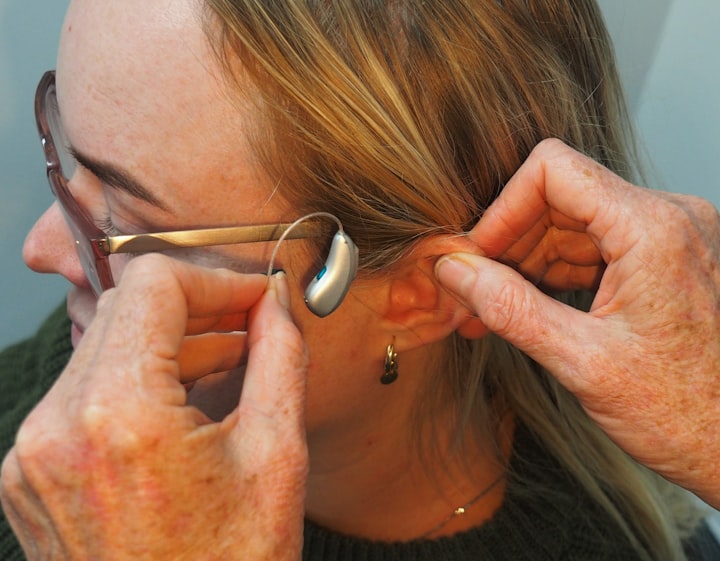


Comments
There are no comments for this story
Be the first to respond and start the conversation.